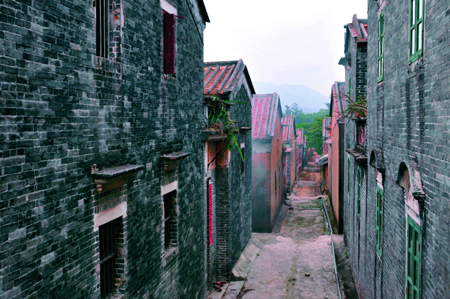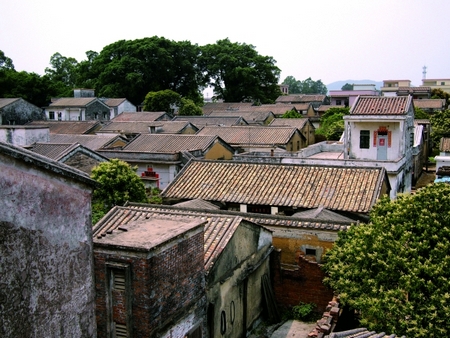Paishan: a living story to walk through
For travelers and city dwellers who relish a stroll down small lanes experiencing historic and cultural charm shadowed in a tranquil atmosphere, Paishan Village in Doumen District, Zhuhai, is not to be missed.
Established in 1778 during the reign of Emperor Ch'ien Lung (Qianlong) in the Qing Dynasty (1644-1911), the village was originally named Xiepai (oblique-aligned) because its dwellings were situated in rows on a slope fronting the field. It was renamed Paishan Village in the early Republic of China period.
The most eye-catching parts when you ramble through the clusters of buildings are the distinctive houses with walls of yellow mud. Impressive old wells, couplets carved on wood, old furniture, and rusty farm implements yet stand out from the age.

Paishan Village in Doumen District
If you take a few more steps, the most highlighting Tam Ancestral Hall with a history of more than 200 years will come into view. Inside the hall stands the statue of Tam Quanshi, founder of the village, showing evidence of the loyalty and filial piety of the Tam family. Despite fading color and collapse of some buildings, the bearing grand and delicate decoration along with the unique architecture tell a tale of the long past of the village.
It is also attractive for the unique terrain, local customs, and practices, as well as vivid legendary stories sealed up in the village. Villagers who have strong awareness of family ties have well preserved pedigree of a clan, portraying a complete picture of the village.

Houses with walls of yellow mud [Photos by Zhang Zhou / Zhuhai Magazine]
Considering the great significance of historic, cultural, and artistic values lying in this place, the government is making every effort to maintain its original presence and to unveil its glamor through some improvements.
A 1,000-sq-m parking lot has been built for visitor convenience. Muddy lanes were also repaved with local featured tabia. The village has always been prepared for narrating a piece of history for passers-by. What better reason could there be for you to miss it?



